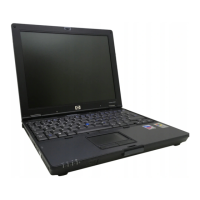






Do you have a question about the HP Compaq NC4000 and is the answer not in the manual?
| Processor cache | 1 MB |
|---|---|
| Processor model | - |
| Processor frequency | 1.4 GHz |
| Processor cache type | L2 |
| Processor front side bus | 400 MHz |
| Processor core voltage (AC) | 0.956 - 1.388 V |
| HDD speed | 5400 RPM |
| HDD interface | Ultra-ATA/100 |
| Optical drive type | No |
| Card reader integrated | Yes |
| Total storage capacity | 40 GB |
| Compatible memory cards | SD |
| Number of HDDs installed | 1 |
| Pixel pitch | 0.264 x 0.264 mm |
| Display diagonal | 12.1 \ |
| Display brightness | 130 cd/m² |
| Display resolution | 1024 x 768 pixels |
| Native aspect ratio | 4:3 |
| Display number of colors | 16.78 million colors |
| Type | PC |
| Modem speed | 56 Kbit/s |
| Power supply type | AC/DC |
| Power requirements | 90 - 264V, 47/63Hz |
| Wireless technology | Wi-Fi |
| Graphics card family | AMD |
| Compatible operating systems | Windows XP |
| Compliance industry standards | IEEE 802.3, IEEE 802.3u, IEEE 802.3ab |
| Memory slots | 2x SO-DIMM |
| Internal memory | 0.25 GB |
| Internal memory type | DDR-SDRAM |
| Maximum internal memory | 1 GB |
| Audio system | PS |
| Pointing device | Touchpad |
| Cabling technology | 10/100/1000Base-T(X) |
| Networking features | Gigabit Ethernet |
| Operating system installed | Windows XP Professional |
| TV-out type | S-Video |
| Charging port type | DC-in jack |
| USB 2.0 ports quantity | 2 |
| Firewire (IEEE 1394) ports | 0 |
| Cable lock slot type | Kensington |
| AC adapter power | 65 W |
| Number of battery cells | 6 |
| Operating shock | 40 G |
| Operating altitude | 0 - 3048 m |
| Non-operating shock | 240 G |
| Operating vibration | 0.5 G |
| Non-operating altitude | 0 - 9144 m |
| Non-operating vibration | 1 G |
| Storage temperature (T-T) | -20 - 60 °C |
| Operating temperature (T-T) | 10 - 35 °C |
| Storage relative humidity (H-H) | 5 - 90 % |
| Operating relative humidity (H-H) | 10 - 90 % |
| Certification | UL, CSA, VDE/TUV |
| Product color | Black, Silver |
| Country of origin | China |
| Depth | 233.7 mm |
|---|---|
| Width | 279.4 mm |
| Height | 27.9 mm |
| Weight | 1590 g |
Explains the function of indicator lights on the notebook.
Details the touchpad and pointing stick functionalities.
Explains the function of various physical buttons on the notebook.
Describes function keys and special keyboard keys.
Identifies external hardware components on the notebook's front.
Identifies external hardware components on the notebook's rear.
Identifies external hardware components on the notebook's right side.
Identifies external hardware components on the notebook's left side.
Identifies external hardware components on the notebook's bottom.
Lists external accessories like adapters and cables.
Explains the information provided by notebook labels.
Identifies notebook power buttons and status indicator lights.
Explains the different power sources for operating the notebook.
Details the notebook's power-saving standby and hibernation modes.
Provides procedures for managing notebook power states.
Describes the factory default power management configurations.
Explains basic procedures for turning the notebook on and off.
Details how to initiate and resume from standby mode.
Details how to initiate and restore from hibernation mode.
Safety procedures for shutting down the system during failures.
Accessing and configuring notebook power settings.
Adjusting CPU speed for performance or power conservation.
Provides information about the notebook's battery packs.
Instructions for calibrating batteries to improve accuracy.
Tips and settings to extend notebook battery life.
Guidelines for properly storing notebook batteries.
Safe and compliant disposal procedures for used batteries.
Overview of touchpad and pointing stick functionalities.
Instructions on how to use the notebook's touchpad.
Instructions on how to use the pointing stick input device.
Customizing settings for the notebook's pointing devices.
Explanation of preset keyboard shortcut combinations.
Detailed procedures for using various hotkey commands.
Information regarding embedded and external keypads.
Instructions on how to enable and use the numeric keypad.
Explains notebook audio controls and connection jacks.
Instructions for connecting external microphones.
Instructions for connecting headphones or external audio devices.
Methods for controlling the notebook's audio volume.
Details the notebook's video output capabilities and ports.
Instructions for connecting S-Video compatible devices.
Procedure to connect external displays like monitors or projectors.
Lists and describes supported multimedia software applications.
Guidelines for handling and maintaining notebook drives.
Information specific to the notebook's primary hard drive.
Step-by-step procedure for removing the primary hard drive.
Step-by-step procedure for reinstalling the primary hard drive.
Information about the notebook's MultiBay II accessory.
Details on using hard drives within the MultiBay II.
Details on using optical drives within the MultiBay II.
Instructions for inserting CDs or DVDs into the drive.
Procedure to remove discs when the notebook has power.
Precautions regarding power states during media playback.
Explains the functionality and specifications of PC Cards.
Step-by-step procedure for inserting a PC Card.
Step-by-step procedure for removing a PC Card.
Explains the functionality and purpose of SD cards.
Step-by-step procedure for inserting an SD Card.
Step-by-step procedure for removing an SD Card.
Explains the function and types of memory modules.
Location and procedure for the expansion memory slot.
Location and procedure for the primary memory slot.
Explains the purpose and management of the hibernation file.
Explains the Universal Serial Bus interface and its uses.
Instructions on how to connect USB devices to the notebook.
Requirements for USB device functionality in the OS.
Enabling support for older USB keyboards, mice, and hubs.
Overview of the notebook's internal modem.
Procedure for connecting the modem cable to the telephone line.
Using adapters for non-RJ-11 telephone jacks.
Configuring modem settings for different countries when traveling.
Troubleshooting common modem connection issues abroad.
Information regarding network cable connections.
Explains Wireless Local Area Network (WLAN) technology.
Instructions for connecting to corporate wireless networks.
Instructions for connecting to public wireless networks.
Steps to set up a wireless network in a home environment.
Procedures for establishing and using a WLAN connection.
Methods to secure wireless network connections.
Installing optional software for wireless configuration.
Explains Bluetooth technology and its uses.
Managing power states for wireless devices.
Procedures for enabling wireless devices on the notebook.
Procedures for disabling wireless devices on the notebook.
Explains the notebook's infrared port and communication.
Instructions for setting up infrared data transmission.
Enables printing to HP network printers remotely.
Overview of notebook security measures and their purpose.
How to configure security settings within Computer Setup.
General information and best practices for using passwords.
Details on setting and managing HP administrator passwords.
Information on setting and using power-on passwords.
Explains DriveLock feature for hard drive unauthorized access protection.
Information on using the preinstalled antivirus software.
Information on using the Windows operating system firewall.
Instructions for installing critical security updates.
How to use the smart card reader and smart cards.
Overview of HP's embedded security management software.
Instructions for connecting an optional security cable.
How to enter and navigate the Computer Setup utility.
Procedure to restore factory default settings in Computer Setup.
Overview of the options available in Computer Setup menus.
Importance and process of installing the latest HP software.
How to acquire the Support Software Disc for updates.
How to find notebook details needed for software updates.
Procedure for downloading and installing system ROM updates.
Procedure for downloading and installing additional HP software.
Overview of methods for recovering system functionality.
Tips for protecting personal files and system stability.
Details on using Altiris Local Recovery for file protection.
How to use Windows System Restore for recovery.
Procedures for repairing or reinstalling software applications.
Guidelines for operating the notebook within safe temperature ranges.
Instructions for cleaning the notebook keyboard.
Instructions for cleaning the notebook's display screen.
Tips for cleaning the notebook's touchpad.
Instructions for cleaning an optional external mouse.
Steps to prepare the notebook for travel or shipping.
Advice and precautions for traveling with the notebook.
Defines the environmental operating limits for the notebook.
Specifies the notebook's power input requirements.
Explains the notebook's default startup device search sequence.
How to enable devices for inclusion in the boot sequence.
How to set default or variable boot sequences.
Explains software deployment and configuration methods.
Tools for managing and updating PC software.
Details HP's software for hardware management and updates.
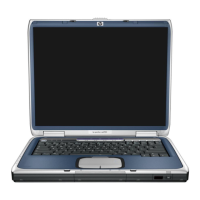
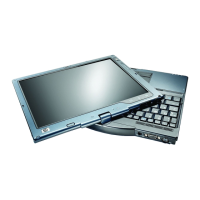
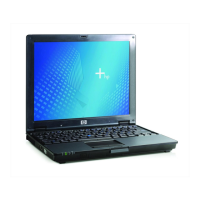

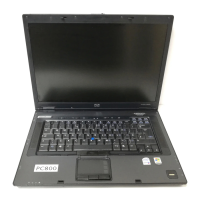


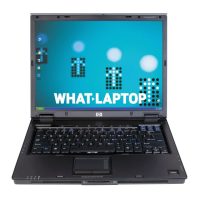
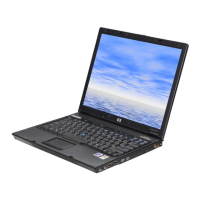
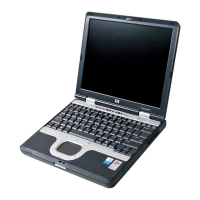

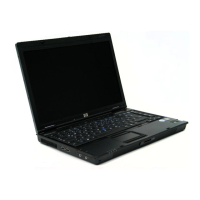
